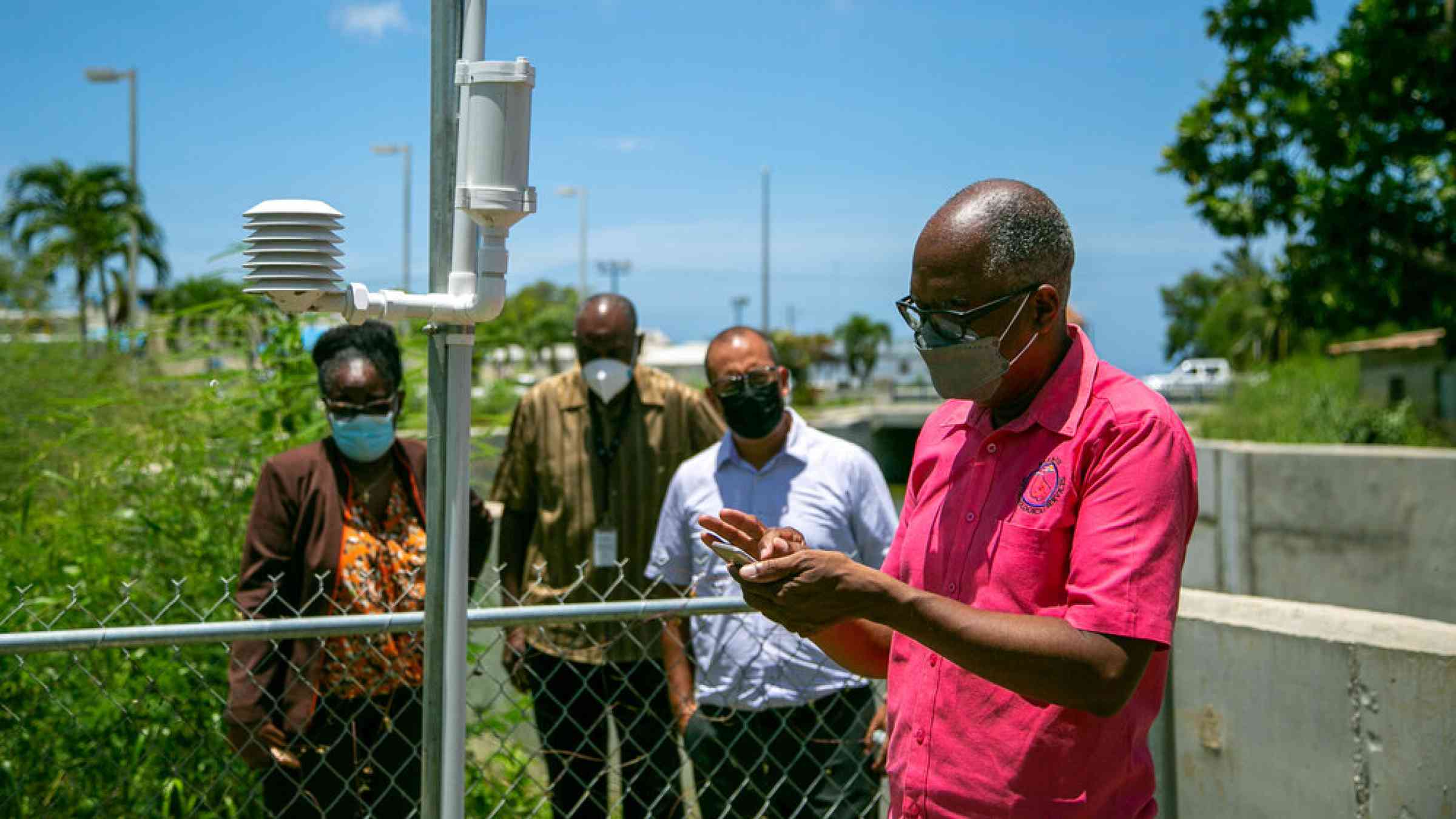Please help us improve PreventionWeb by taking this brief survey. Your input will allow us to better serve the needs of the DRR community.
Public review of the Words into Action guide on Multi-Hazard Early Warning Systems

Regional Early Warning Systems Consortium (REWSC) Meeting in Barbados
The United Nations Office for Disaster Risk Reduction invites members of the DRR community to comment on the new Words into Action guide on Multi-Hazard Early Warning Systems.
The climate emergency is a global threat that poses significant economic, social, and environmental risks to communities and ecosystems. Climate-related disasters have increased in recent years, and those who are least responsible for global emissions often experience the worst impacts.
The COVID-19 pandemic has highlighted the need for integrated solutions that address interconnected risks. Multi-hazard early warning systems (MHEWS) are essential tools for that enable individuals, communities, governments, business and others to take timely action to reduce disaster risks in advance of hazardous events. They are a critical component of comprehensive disaster risk reduction strategies.
MHEWS save lives and provide significant economic benefits, such as reduced damage costs. As an example, with just 24 hours’ notice, MHEWS can reduce damage from hazardous events by up to 30%, and longer lead times offer even broader benefits.
According to the Sendai Framework for Disaster Risk Reduction, Governments have the overall responsibility for reducing disaster risks. However, the Global Status of Multi-hazard Early Warning Systems: Target G report indicates that only 50% of countries have reported being covered by MHEWS, leaving many at greater risk of being impacted by disasters.
To scale up action related to the coverage of MHEWS the UN Secretary-General's call on Early Warnings for All (EW4All) initiative. During the regional launch of the EW4All initiative in Barbados, Amina Mohammed, Deputy Secretary-General of the United Nations, noted, "Early warning systems are not a privilege, but a right that everyone should have access to."
This Words into Action guide aims to promote greater implementation of these critical systems across all sectors to protect the most exposed populations from disasters.
Through this guide, key principles and practical steps for establishing and maintaining effective, end-to-end, people-centered MHEWS will be explored, including risk assessment, data management, communication strategies, and community engagement. We hope this guide will inspire and support action to build more resilient communities and reduce the impacts of disasters.
Using a knowledge co-production methodology, Words into Action working groups take a participatory approach that ensures wide and representative diversity in sources of know-how, technical expertise and broad practical experience. In this context, this guide on MHEWS will be on PreventionWeb for public review for two months to ensure no important aspect has been overlooked.
Explore further
Also featured on
Please note: Content is displayed as last posted by a PreventionWeb community member or editor. The views expressed therein are not necessarily those of UNDRR, PreventionWeb, or its sponsors. See our terms of use
Is this page useful?
Yes No Report an issue on this pageThank you. If you have 2 minutes, we would benefit from additional feedback (link opens in a new window).